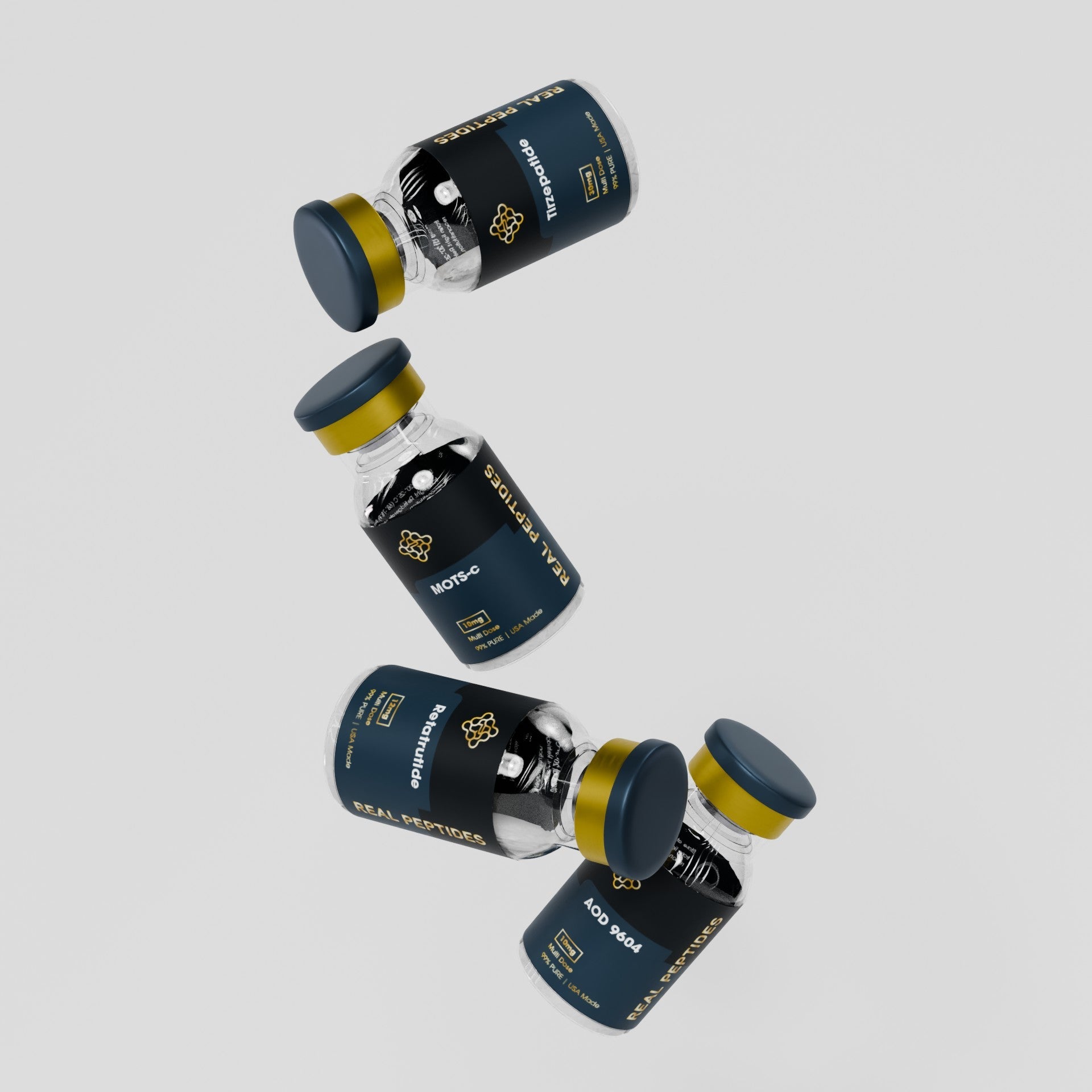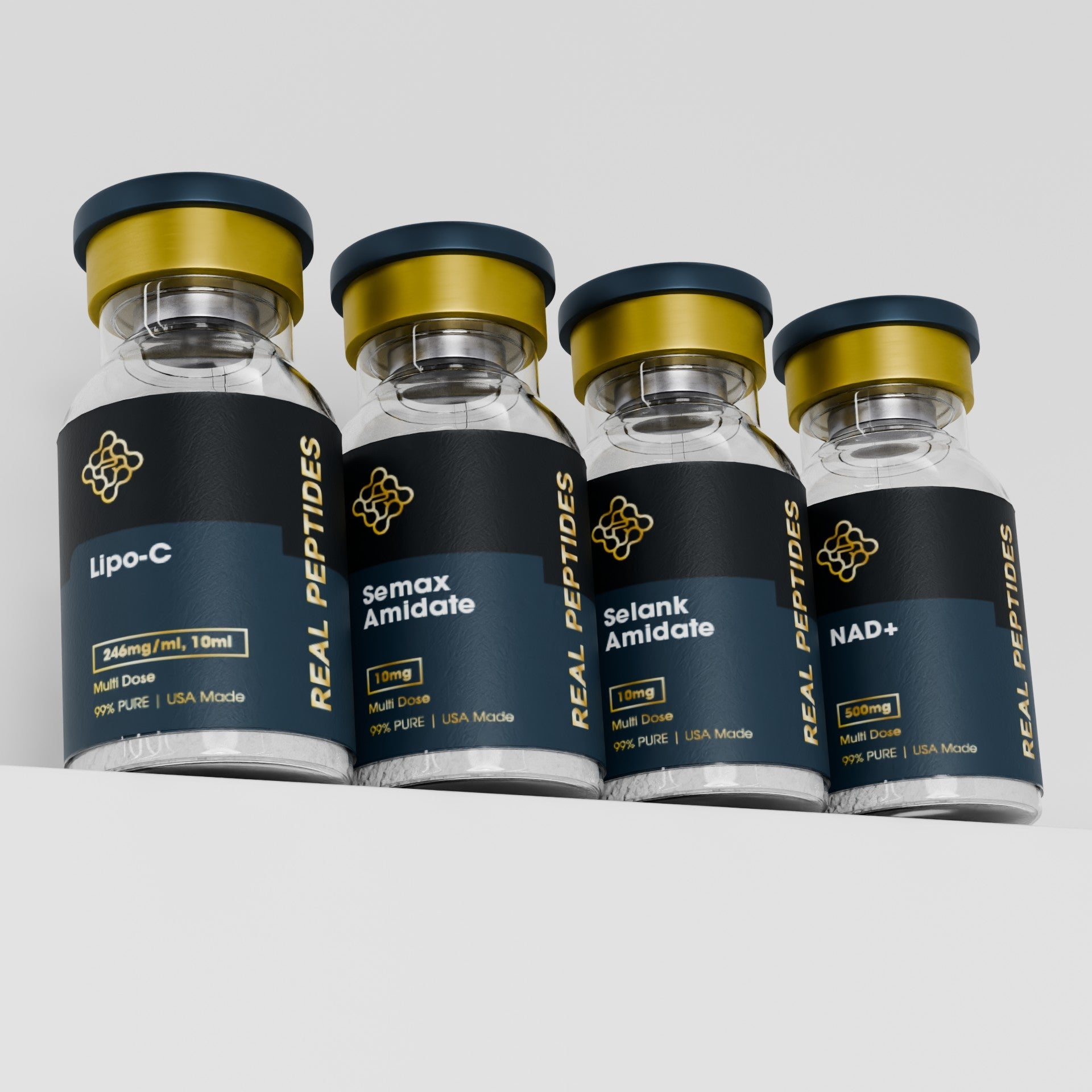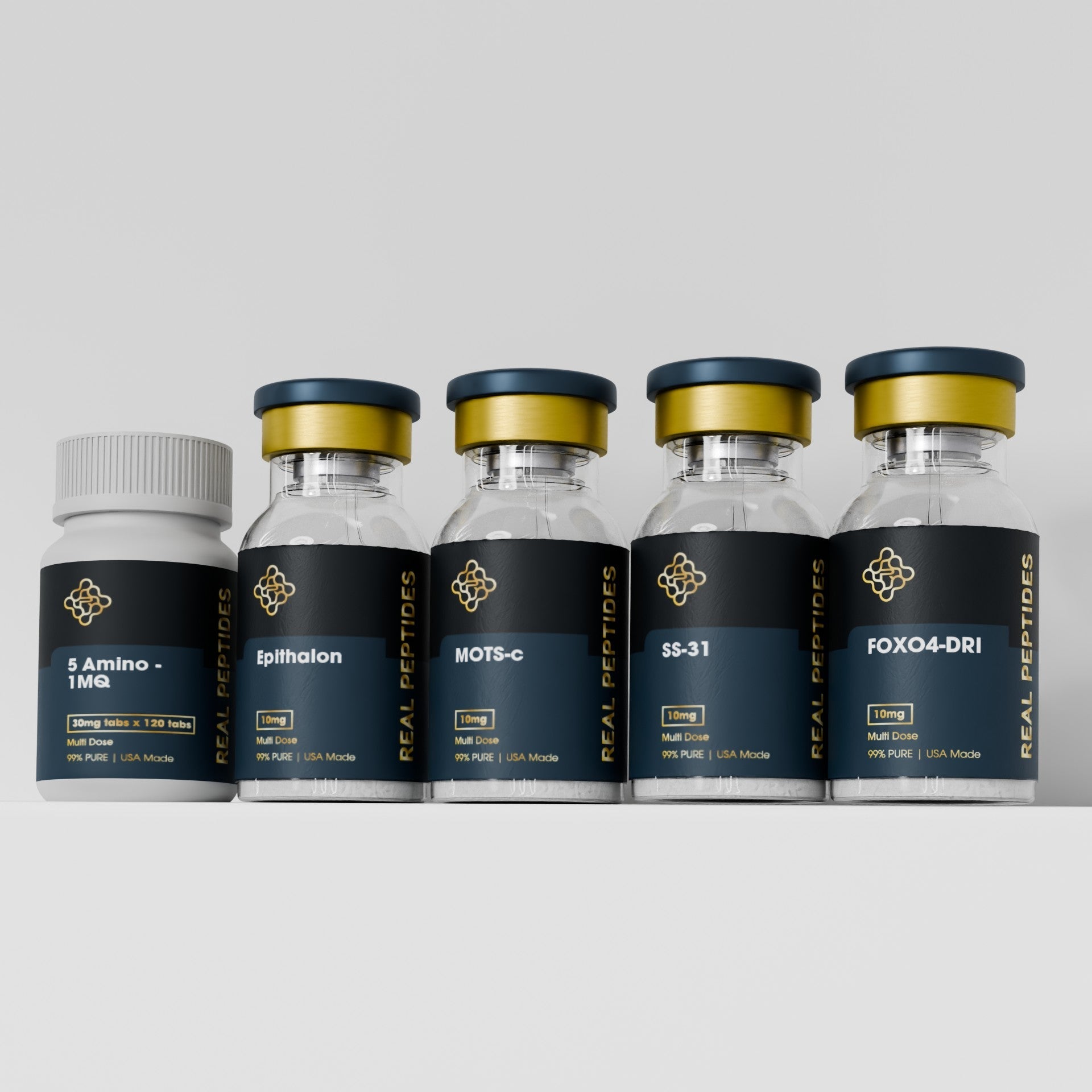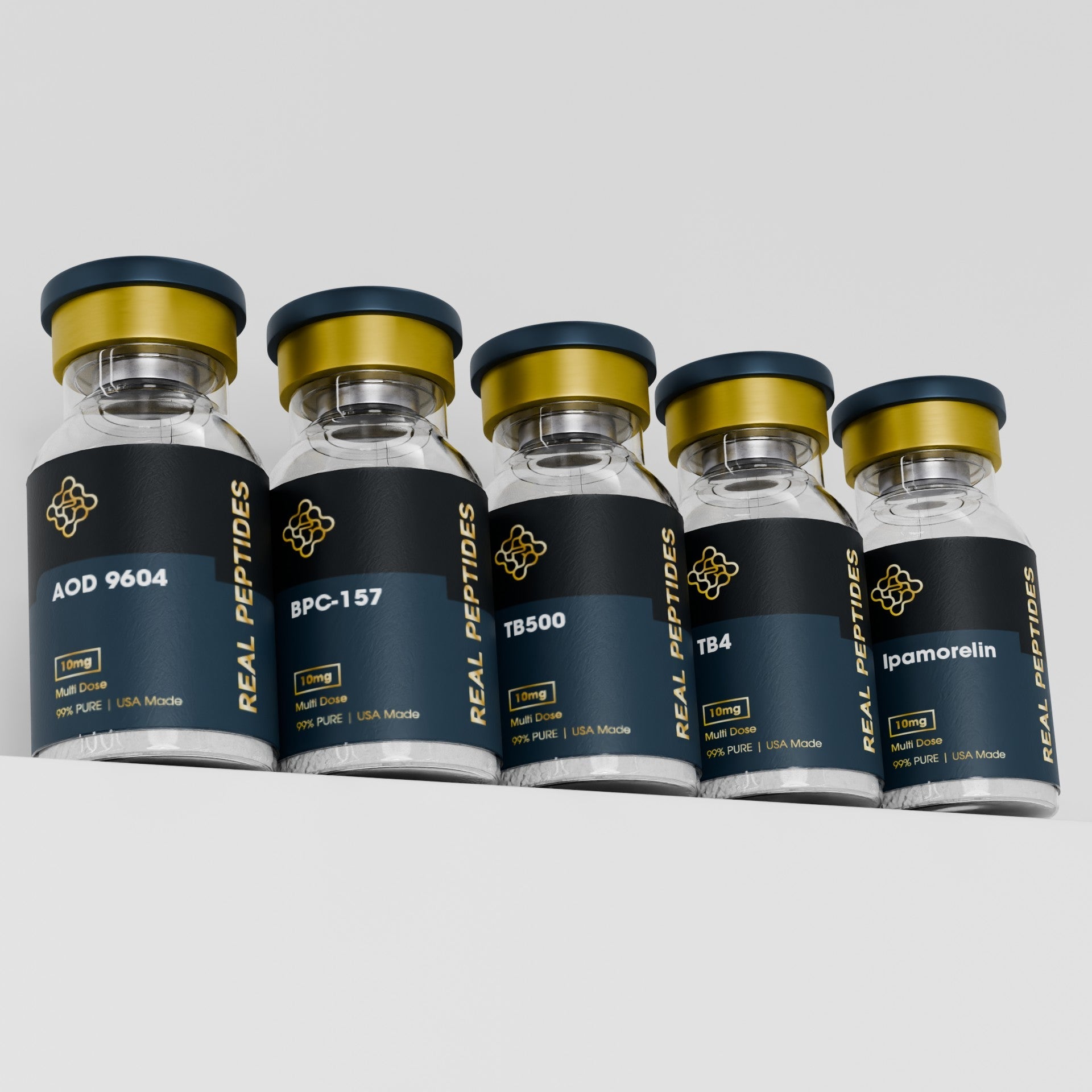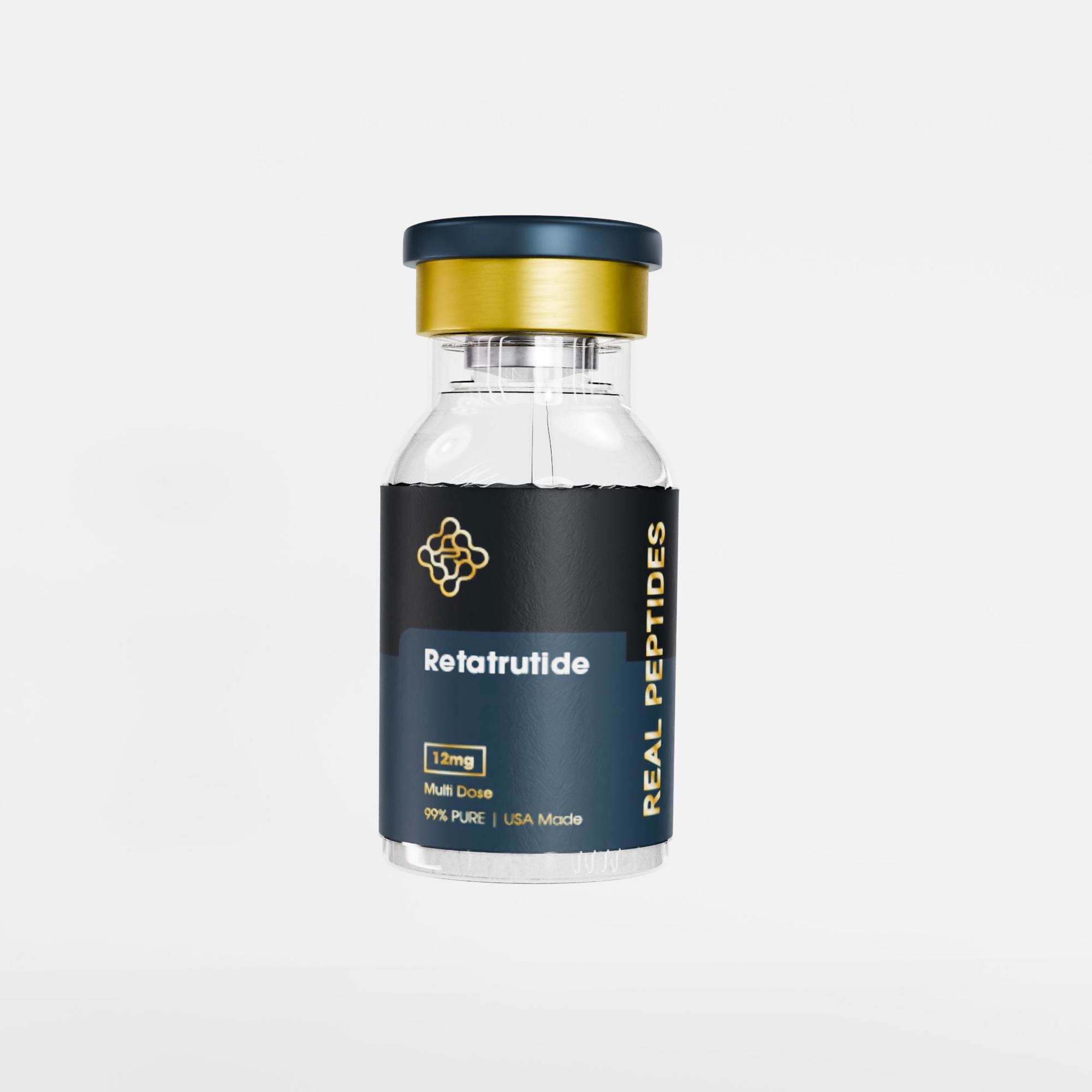
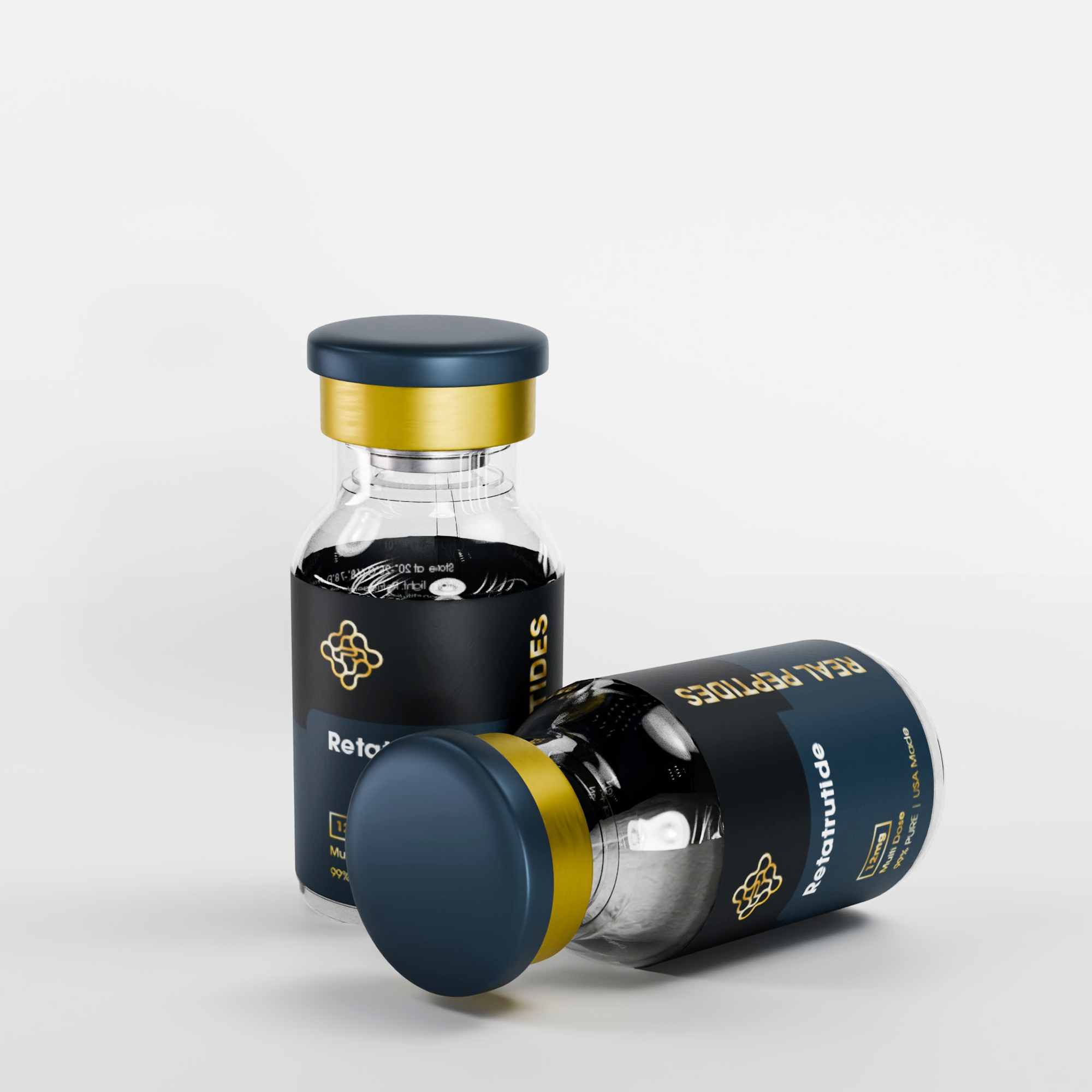
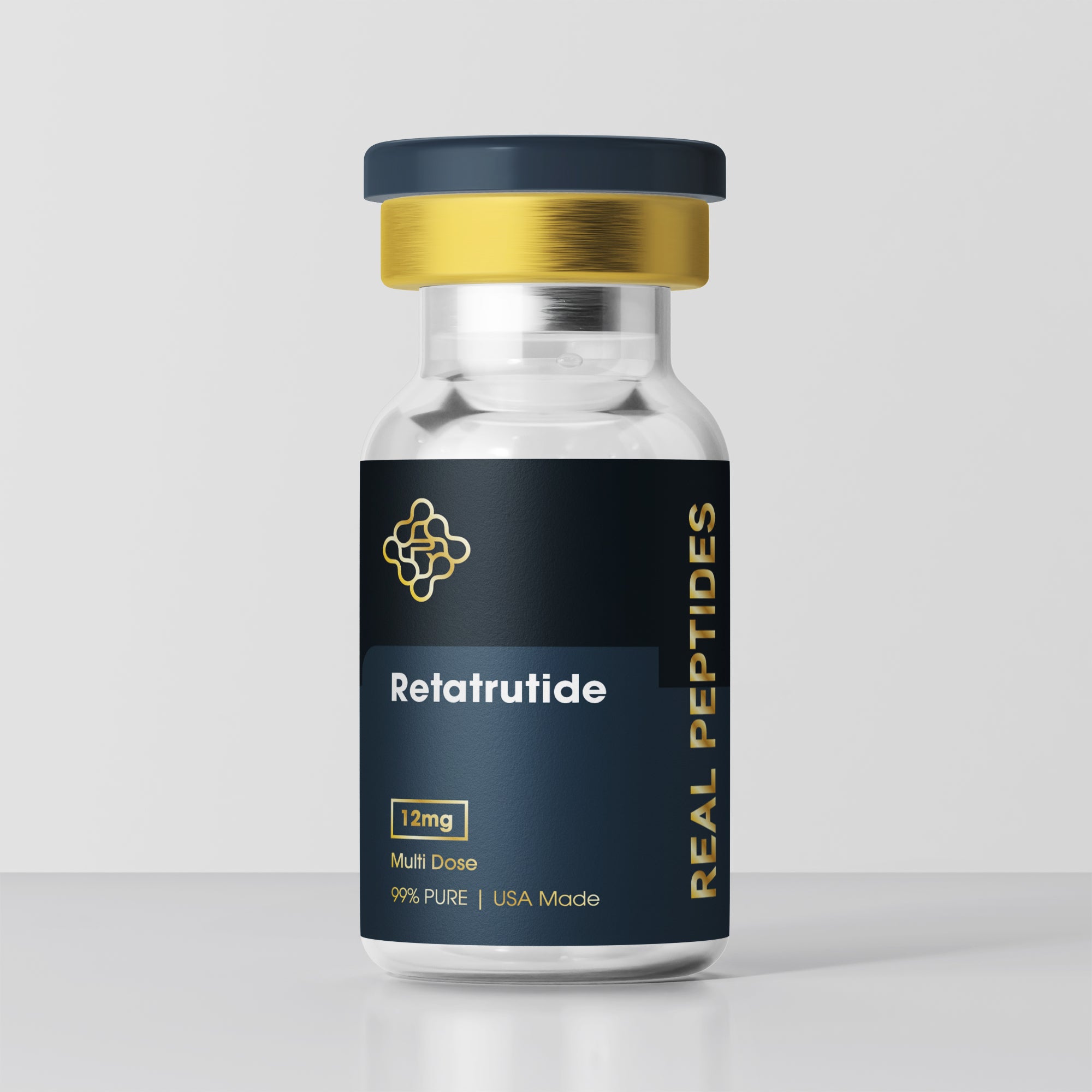
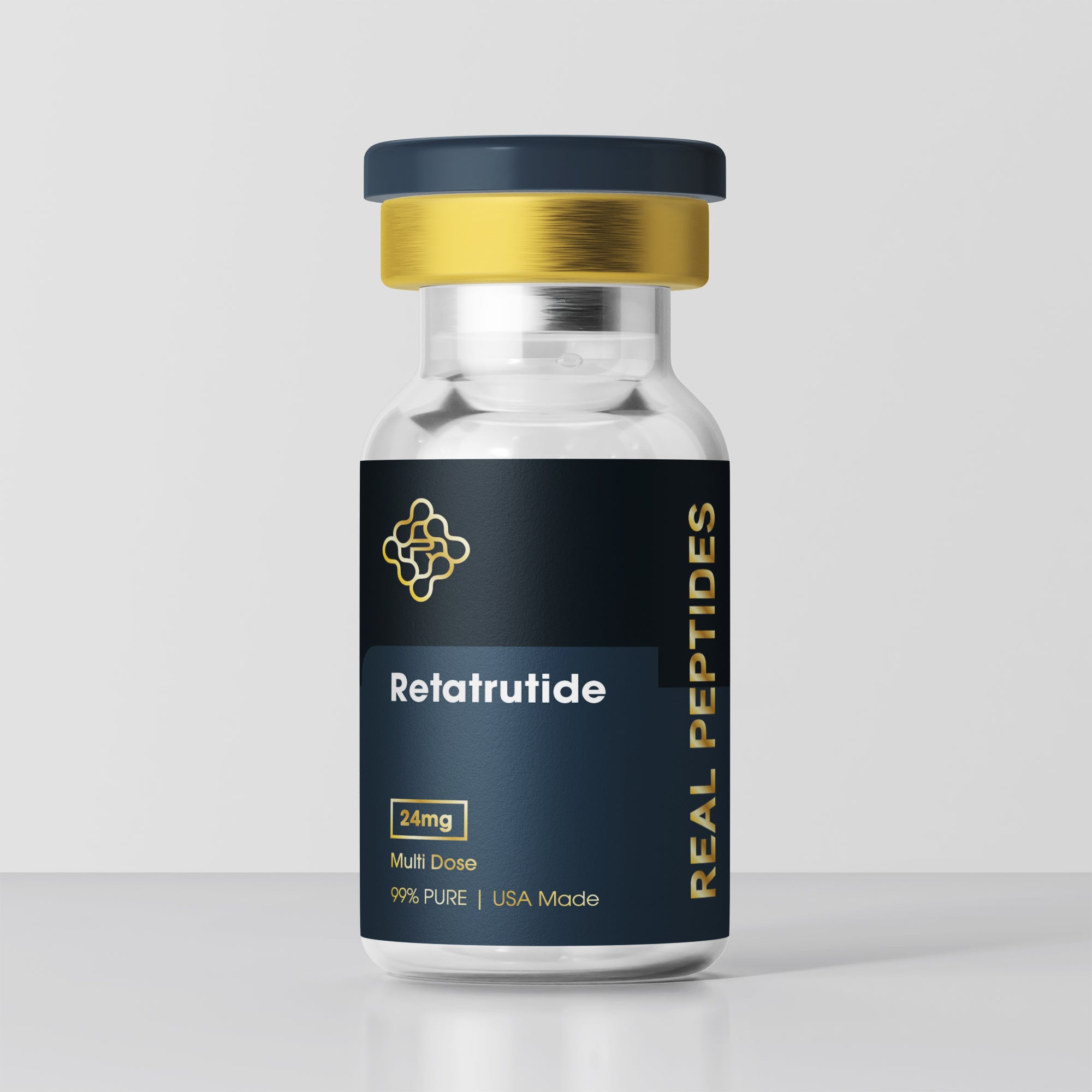

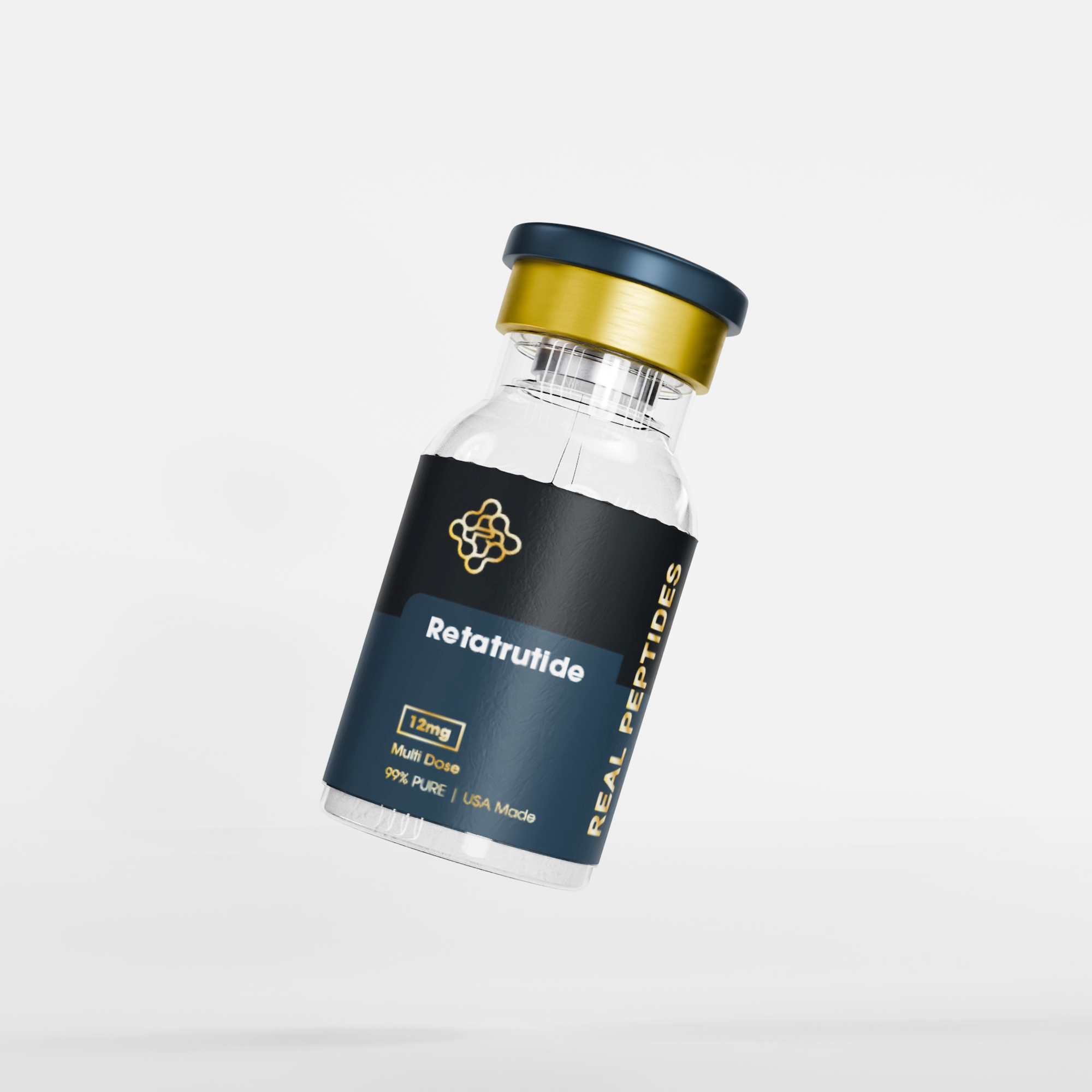
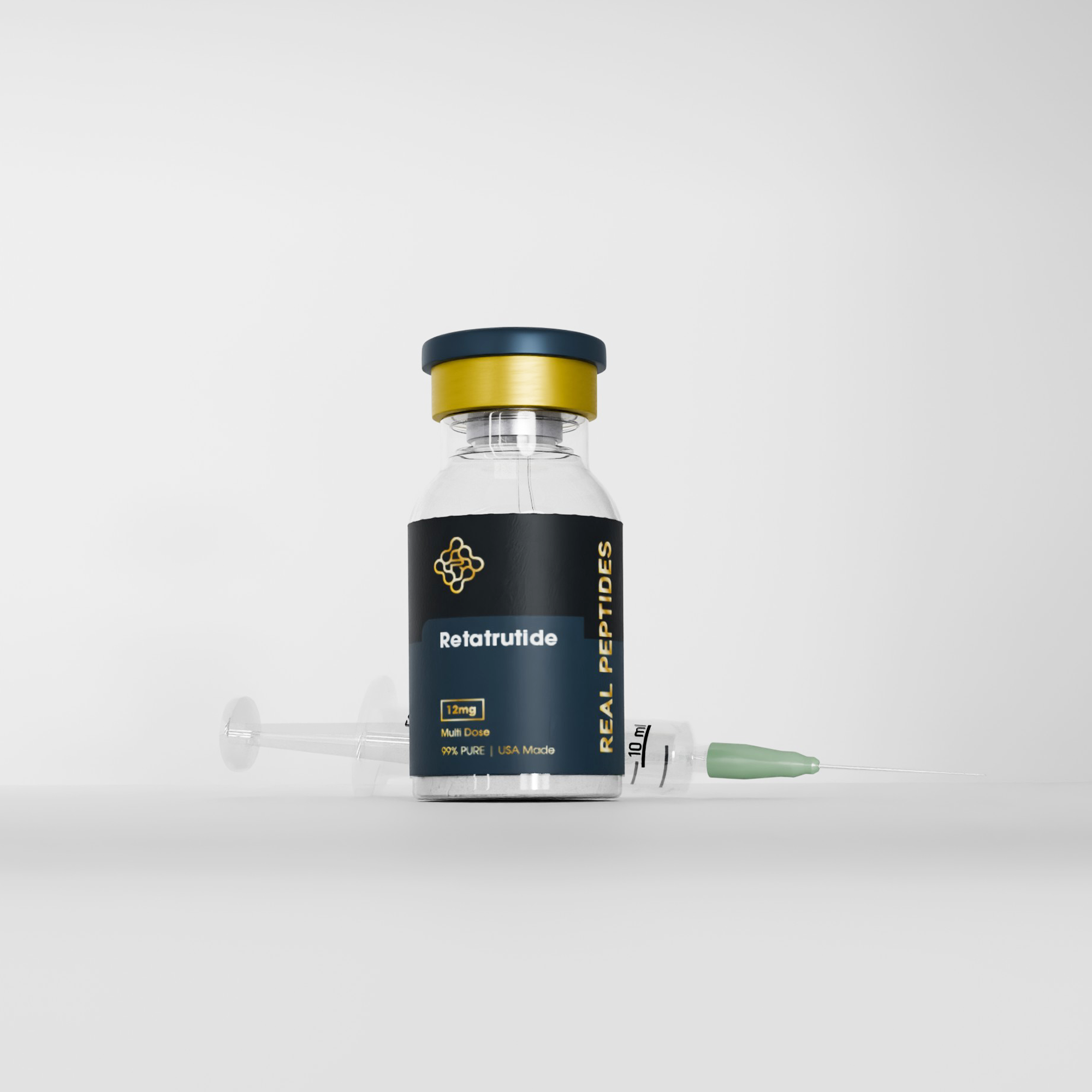
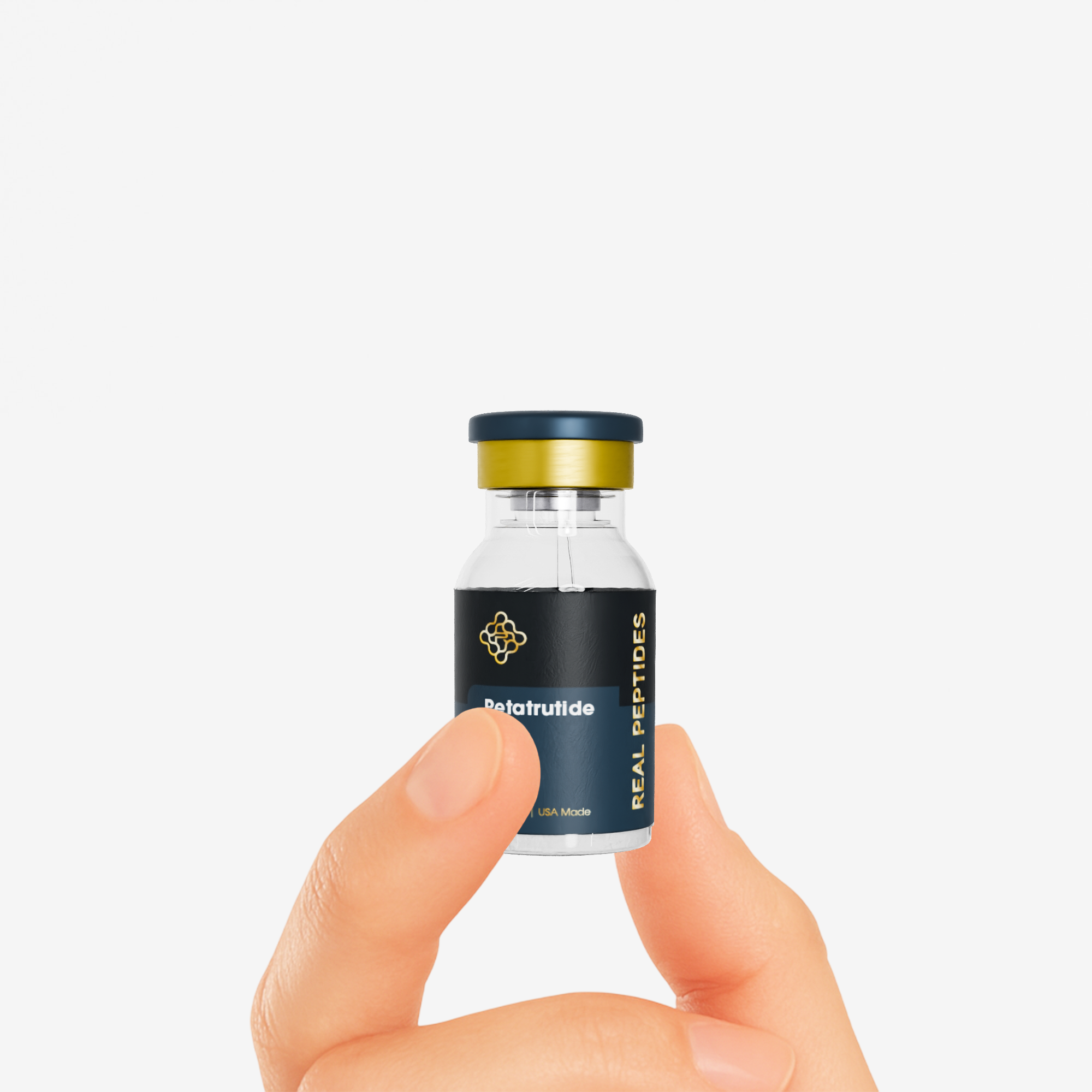
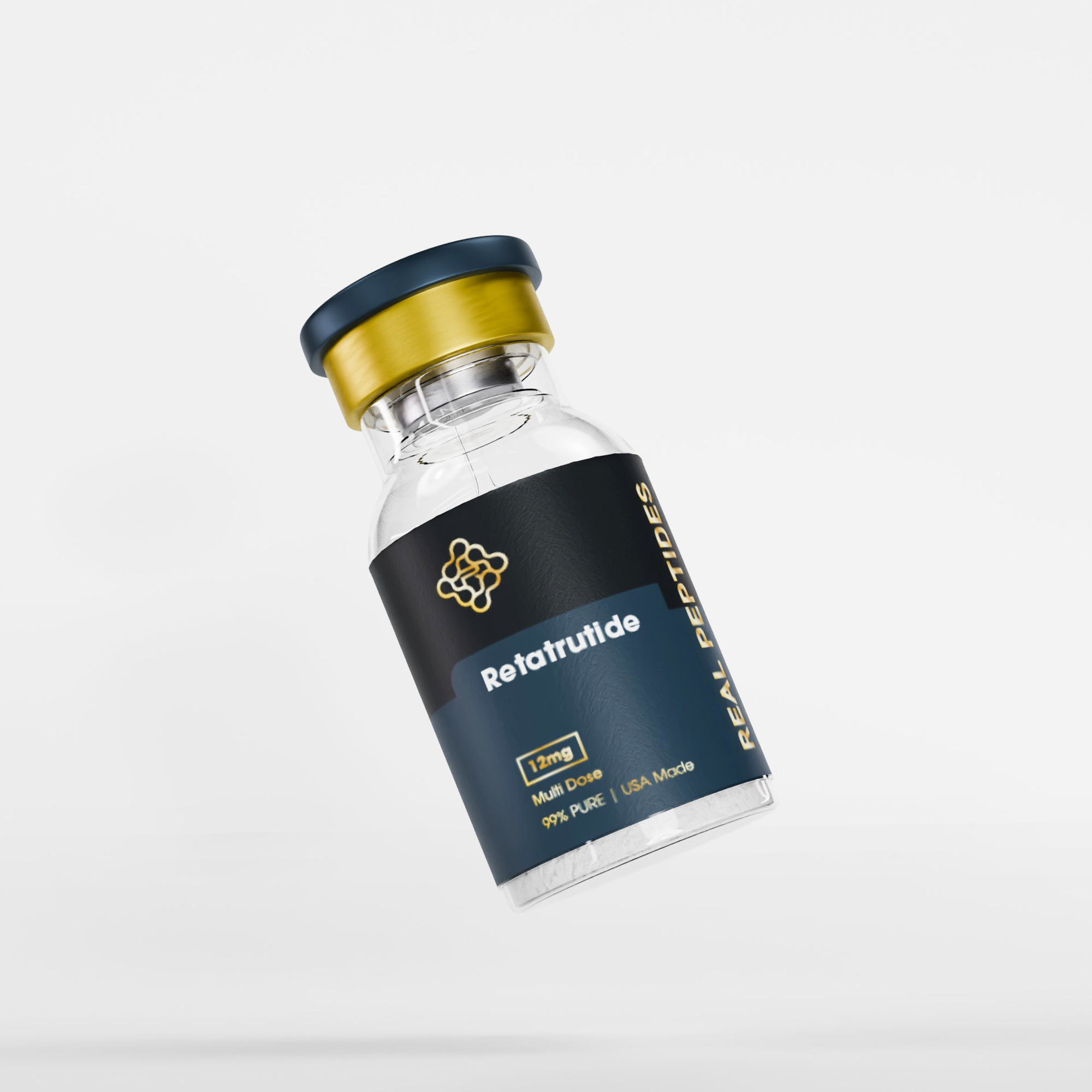
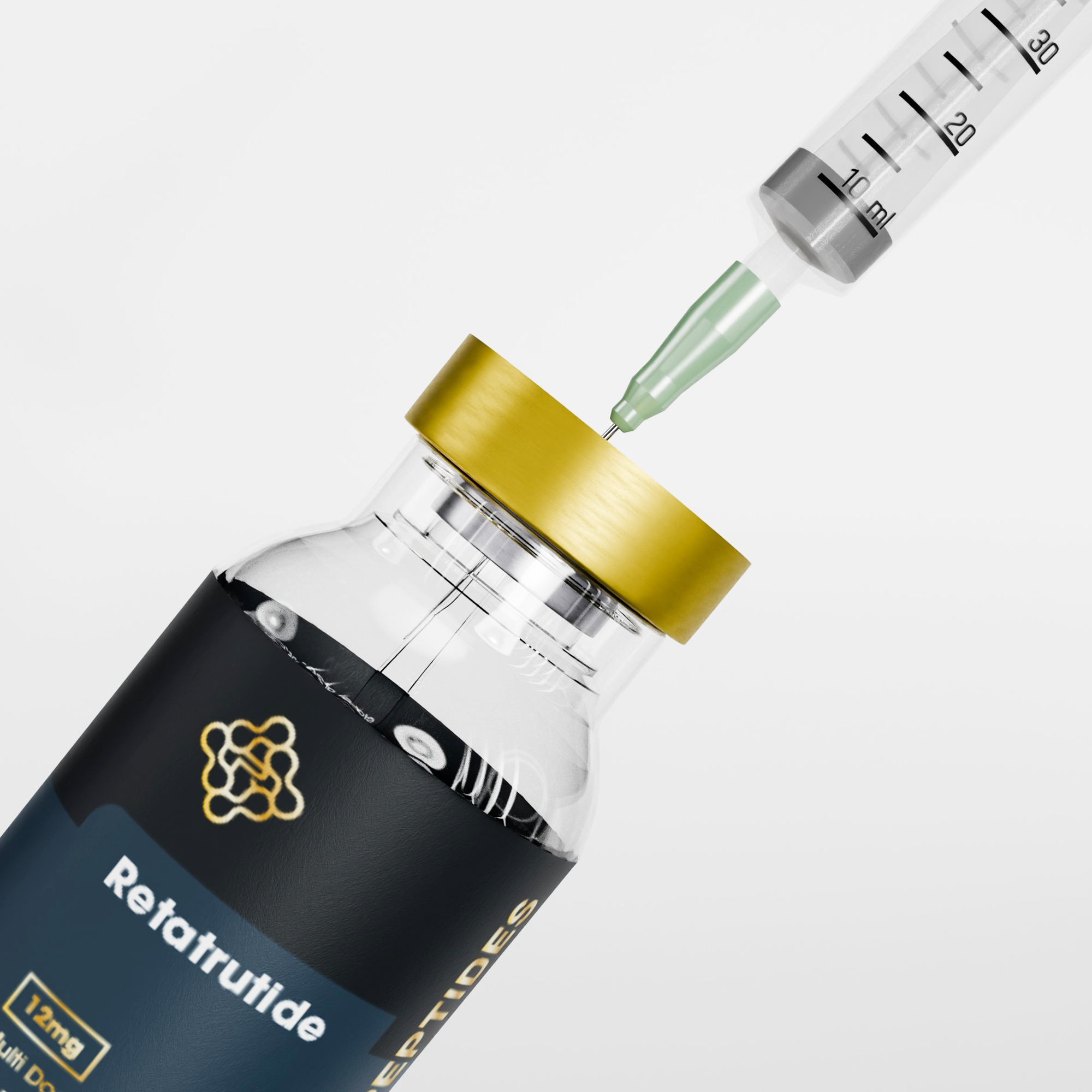
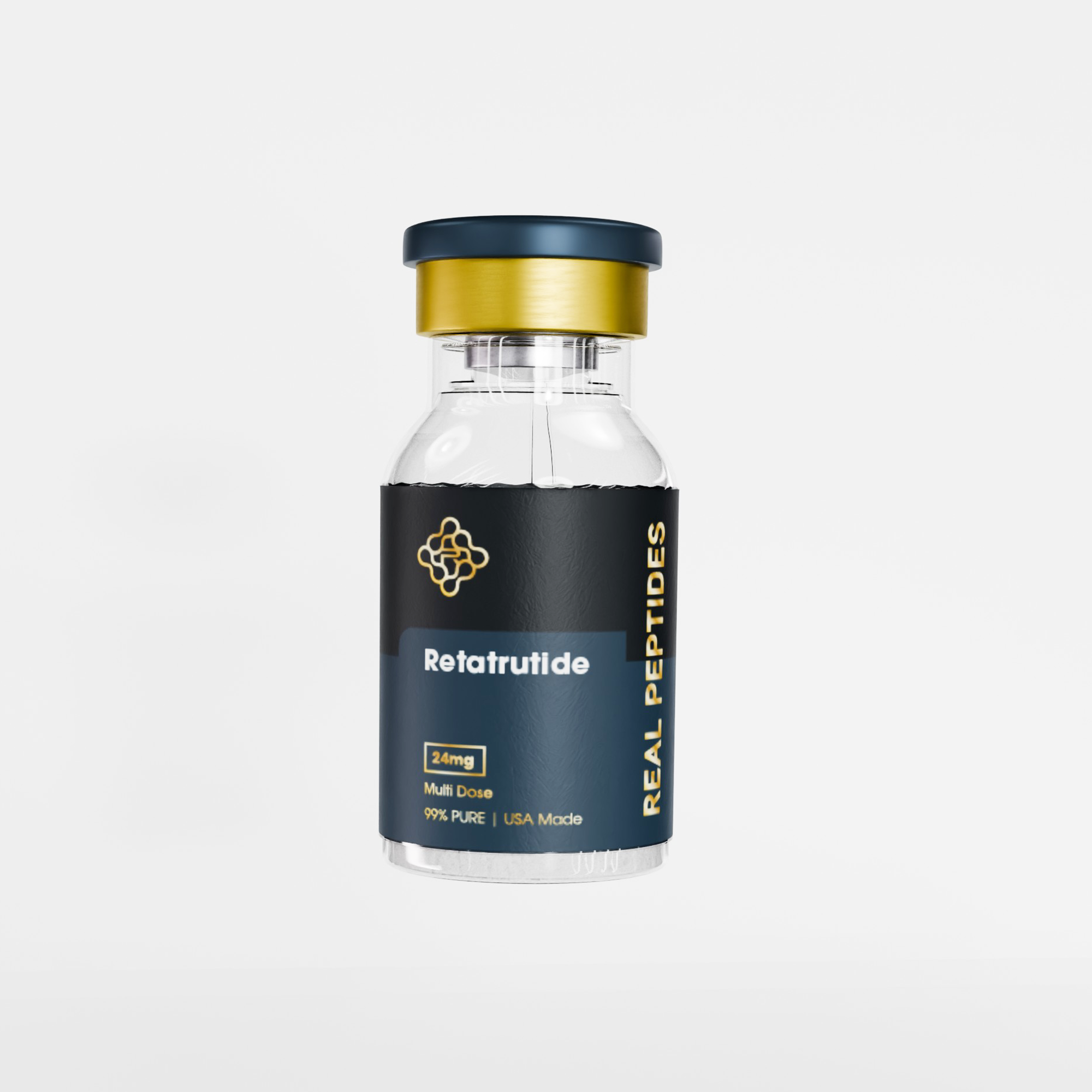


Retatrutide
Retatrutide is a next-generation tri-agonist peptide that activates GLP-1, GIP, and glucagon receptors in one molecule—perfect for labs examining fat-loss pathways, appetite suppression, and energy-expenditure models. Available in 12 mg and 24 mg vials, each batch is USA-manufactured, HPLC-verified to ≥ 99% purity, endotoxin-screened (< 0.1 EU/mg), and supplied with detailed handling notes. These clean, repeatable receptor activations let you dissect multi-pathway metabolic signals with confidence.
⚠️ Important Disclaimer
For Research Use Only. Not for human consumption or therapeutic treatment.

Retatrutide
Retatrutide
Observed Weight Modulation in Retatrutide Research Models
In controlled laboratory studies, models administered retatrutide exhibited an average reduction equivalent to approximately 24% of baseline mass over a 48-week evaluation period. These findings are based on Phase-2 data and should be interpreted within the scope of scientific research only.
For research use only. Not for human or veterinary use.
Triple-Receptor Mechanism in Retatrutide Research
Retatrutide is a tri-agonist peptide shown in laboratory studies to simultaneously activate GLP-1, GIP, and glucagon receptors. This unique combination has been observed to influence appetite signaling pathways and support energy regulation in research models.
For laboratory research use only. Not for human or animal use.
Blood Sugar and Insulin Markers in Research Models
In controlled laboratory studies, Retatrutide has been observed to influence biomarkers such as HbA1c, fasting glucose levels, and insulin sensitivity in experimental models. These findings suggest potential metabolic modulation for further investigation.
For research use only. Not for human consumption or therapeutic application.
Observed Effects on Visceral and Liver Fat in Research Models
Preclinical studies involving research peptides like Retatrutide have demonstrated reductions in visceral fat and liver lipid accumulation, along with notable shifts in triglyceride levels in animal models. These outcomes are being explored for their potential relevance in metabolic function research.
This peptide is intended strictly for laboratory research. Not for human use or therapeutic application.
Cardiometabolic Biomarker Research Potential
In controlled research settings, studies on Retatrutide have observed reductions in systolic and diastolic blood pressure, improved lipid profiles including LDL levels, and waist circumference changes in animal models. These findings support further exploration in cardiometabolic-focused peptide research.
This product is for laboratory research use only. Not for human or therapeutic use.
Weekly Micro-Dosing Efficiency in Research Protocols
Research trials often employ a once-weekly subcutaneous micro-dosing approach, typically around 0.1 mL, to maintain consistent exposure levels in peptide models. This allows for sustained analysis without requiring daily administration.
For research use only. Not approved for human consumption or clinical use.
Tolerability in Research Models
Research models receiving GLP-1 class peptides such as Retatrutide have shown mild and temporary gastrointestinal reactions, generally decreasing as dosage protocols are stabilized. These observations are consistent with GLP-1-related pathways in research.
Retatrutide is not intended for human or diagnostic use. For qualified research personnel only.


What Is Retatrutide?
Retatrutide (Reta GLP-3) is a 39-amino-acid synthetic peptide engineered as a tri-agonist for the GLP-1, GIP, and glucagon receptors. By combining three receptor activities, Retatrutide provides a powerful tool to investigate multi-pathway metabolic control, including satiety, insulin secretion, and lipid breakdown—without needing separate agonists.

Why Choose Retatrutide?
Researchers choose Retatrutide when they need a single-molecule solution for complex metabolic-health studies. Its tri-agonist design delivers synchronized receptor activation that mimics cutting-edge therapeutic candidates, enabling streamlined protocols for appetite-control assays, lipolysis and thermogenesis modeling, and energy-expenditure measurements. Manufactured under ISO-certified conditions and verified to ≥ 99% purity with low endotoxin, Retatrutide ensures consistent, high-fidelity data across in vitro and in vivo experiments.

What Sets Retatrutide Apart?
Unlike single-pathway peptides, Retatrutide uniquely merges GLP-1, GIP, and glucagon receptor activities in one stable compound. This integrated approach reproduces synergistic metabolic effects—delaying gastric emptying, optimizing insulinotropic and glucagon-mediated pathways, and boosting basal metabolism—in a single dosing regimen. Its availability in both 12 mg and 24 mg vials offers flexibility for dose-response and longitudinal rodent studies, making Retatrutide the go-to peptide for advanced obesity and energy-metabolism research.
Studies
NEJM Study: Triple Agonists and Obesity Reduction
Source: Jastreboff et al., New England Journal of Medicine, 2023
- Summary: This Phase 2 clinical trial demonstrated significant weight loss in participants administered Retatrutide, showing greater reductions in body fat percentage than GLP-1-only therapies like semaglutide.
- Findings: Average weight reduction of up to 24% at higher doses.
- Official URL
Nature Metabolism: Retatrutide in Rodent & Primate Models
Source: Killion et al., Nature Metabolism, 2022
- Summary: This preclinical study evaluated Retatrutide’s effect on metabolic rate and thermogenesis. Results confirmed multi-receptor activation (GLP-1/GIP/GCGR) increases fat oxidation and improves insulin sensitivity.
- Findings: Enhanced basal metabolism and lower adiposity in rodent subjects.
- Official URL
FDA Investigational Drug Pipeline (IND Reports)
Source: U.S. Food & Drug Administration, 2023
- Summary: Retatrutide is listed as an active candidate in the FDA’s investigational pipeline for obesity and metabolic disorder research. Clinical monitoring is ongoing as part of GLP-1/GIP/GCGR combination trials.
- Details: Legal classification: Investigational. Not approved for medical use.
- Official URL
Endocrinology Today: Hormonal Balance & Glucose Control
Source: Hall et al., Endocrinology Today, 2022
- Summary: The article covers endocrine modulation through triple agonists like Retatrutide and their impact on beta-cell function and energy stability in lab models.
- Findings: Improved glucose regulation and reduced fasting insulin levels.
- Official URL
Retatrutide FAQs
What is Retatrutide?
Retatrutide is a research-grade peptide known for its tri-agonist activity—activating GLP-1, GIP, and glucagon receptors simultaneously. It is being studied in scientific settings for its unique mechanism of action across metabolic pathways.
Is Retatrutide a natural peptide?
No. Retatrutide is a synthetic peptide, engineered in laboratory settings to mimic and enhance the function of naturally occurring hormonal pathways in research models.
What is Retatrutide used for in research?
Retatrutide is commonly studied in metabolic, obesity, glucose regulation, and energy balance models. Its triple-receptor profile makes it an ideal candidate for preclinical exploration of multi-receptor metabolic interactions.
What is the recommended Retatrutide dosage in research?
Research protocols often begin with 0.25mg and may scale to 0.5mg or 1mg, depending on the experimental model and study goals. Dosage should be determined based on internal SOPs and protocol requirements.
Is there a Retatrutide dosage chart available?
Yes. Dosage charts for Retatrutide are typically created based on model weight, study length, and receptor activation goals. Charts often show titration schedules from 0.25mg up to 1mg over several weeks.
Can Retatrutide be combined with other peptides in research?
Yes. Retatrutide is frequently used in research stacks with peptides such as Tesamorelin, CJC-1295, or Cagrilintide to explore synergistic effects in metabolic modeling.
Is Retatrutide a GLP-1 agonist only?
No. Retatrutide is classified as a triple agonist, meaning it activates GLP-1, GIP, and GCGR receptors, offering a broader biological profile for researchers studying complex peptide interactions.
How is Retatrutide stored for lab use?
Lyophilized Retatrutide should be stored at or below -20°C for long-term stability. After reconstitution, storage in a refrigerated environment is generally recommended as per research protocols.
Is Retatrutide approved for human or therapeutic use?
No. Retatrutide is not approved by the FDA and is sold strictly for laboratory and research purposes only. It is not intended for human or veterinary use.
Where is your Retatrutide peptide manufactured?
Our Retatrutide is USA-manufactured under cGMP-like conditions, with each batch lab-tested for purity, potency, and consistency. Certificates of Analysis (COA) are provided for all research peptides.



